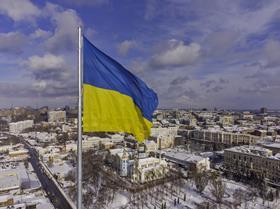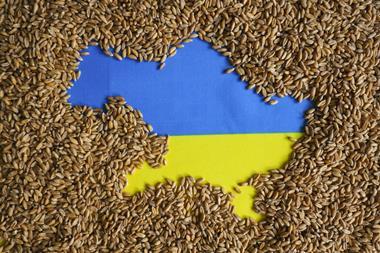Investment bank predicts that conflict losses will be ‘manageable’, yet insurer boss believes flexibility will remain central for keeping abreast of unfolding situation
By Editor Katie Scott

Despite the rumoured peace talks this week between Russia and Ukraine, the ramifications on the insurance industry from the former-Soviet state’s invasion in February 2022 is still ongoing.
A briefing note published by investment bank Jefferies on 29 March 2022, for example, estimated that aviation war losses in the UK insurance market will amount to $1.5bn (£1.1bn), while Lloyd’s of London is predicting that its insured losses will total between 15% and 20% of asset values – indicating a low, single digit billion-pound loss.
Jefferies believes the main exposure for the insurance market arising from the Russian invasion comes from a war risk policy held by Irish aircraft leasing company AerCap – the bank explained that this cover “does not include a cancellation clause and has an annual loss cap of $1.2bn”.
Other potentially loss laden lines of business include marine, political risks and terrorism.
Despite these red flags, however, Jefferies noted that “conflict losses should be manageable”.
It continued: “With marine underwriters issuing cancellation notices before Russia invaded Ukraine and the market generally limiting exposure in Ukraine since Crimea was annexed in 2014, we believe that losses will be manageable.”
Credit rating agency AM Best, meanwhile, has drawn a line in the sand underneath its Russian relationships.
On 29 March 2022, it said: “AM Best has suspended all commercial activities to clients in Russia and has withdrawn all credit ratings on Russia-based (re)insurance companies, subject to sanctions imposed by the European Union (EU).
“In addition, AM Best has terminated the provision and redistribution of all information products and services to clients in Russia with immediate effect.”

Large losses
Jefferies’ briefing note identified two insurers impacted by war-related exposures – Lloyd’s of London insurer Beazley and Hiscox’s reinsurance arm.
The investment bank estimated that the lines of business impacted by the Russia-Ukraine conflict account for around 4% of Beazley’s group premiums – including approximately 1% of group premiums associated with aviation war risks.
It predicted that the insurer will clock up $80m of losses in 2022 linked to the war, however it also expected this to be “manageable” for Beazley.
As for Hiscox, Jefferies thinks it will face $15m worth of additional claims as a result of the Russia-Ukraine conflict.
Flexibility requirement
For Zurich’s UK chief executive Tim Bailey, the only way for insurers to navigate the ongoing war is through embracing flexibility – especially as the situation in Ukraine is developing and changing at pace.
Speaking to Bailey on Monday night, he told me that the main business areas at Zurich that are impacted by the conflict are aviation insurance and international programmes – however, he added that the insurer faced very limited exposure here and that its main priority at the moment is to monitor the situation as it continues to unfold.
As the conflict follows hot on the heels of the Covid-19 pandemic, the insurance sector has certainly seen no respite in terms of unexpected exposures, which is no doubt causing more difficult conversations for commercial lines brokers with their clients.
No doubt the industry will be keeping a weather eye on the evolving situation in Ukraine, especially as there is the potential for the conflict to rumble on for a lengthier time frame.
How heavily impacted insurers’ half-year financial reports will be as a result of the conflict is yet to be seen.












































No comments yet